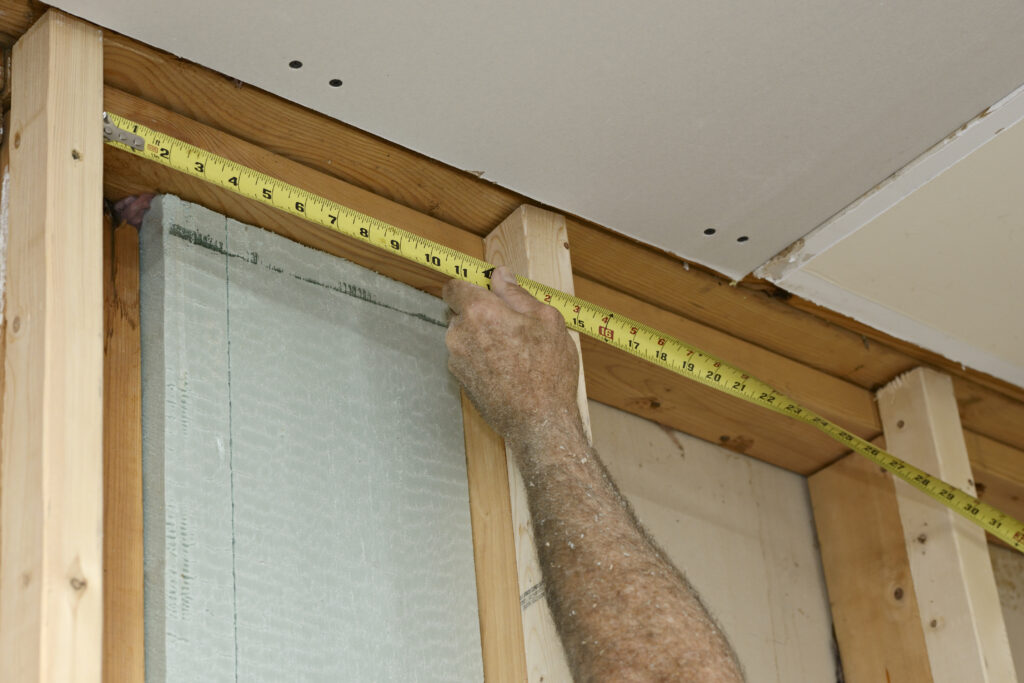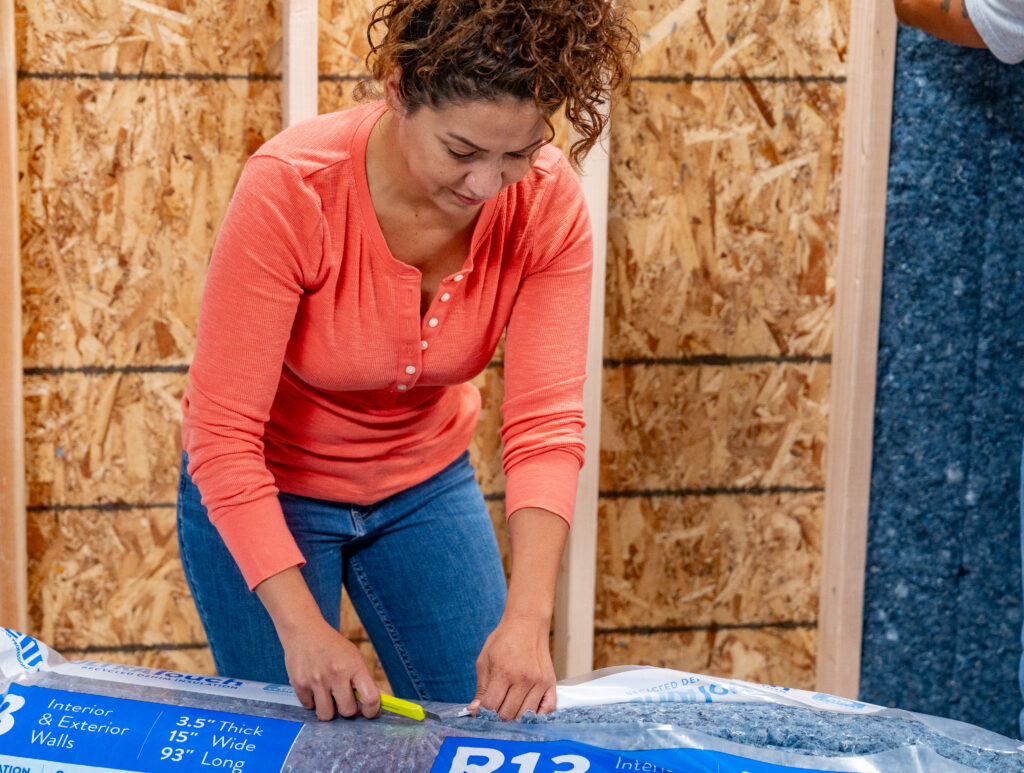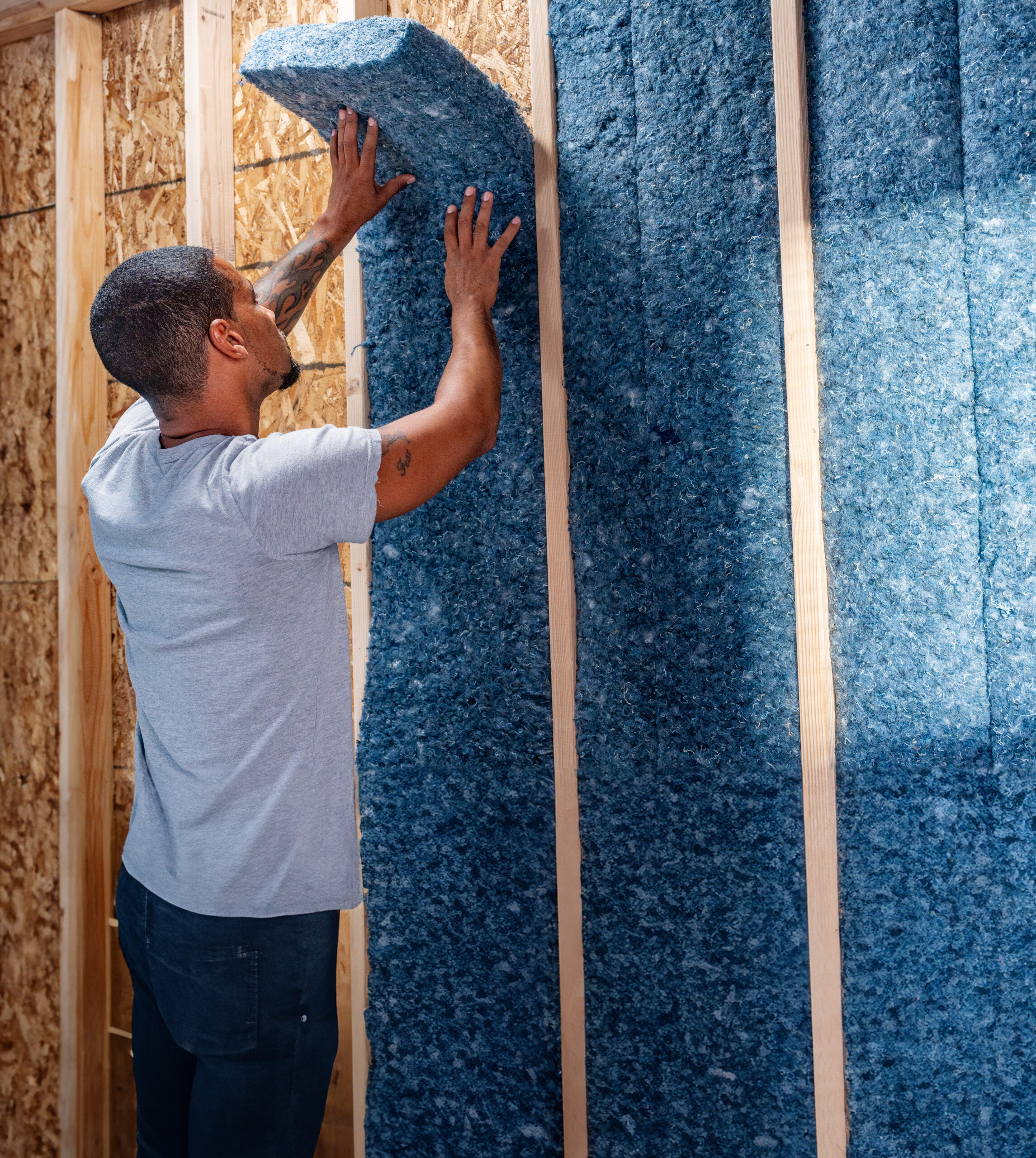Denim Insulation Installation Tips & Checklist
Tips for Installing Denim Insulation:
Installing denim insulation is a straightforward DIY project, but preparation is key. Use these tips for safe, quick, and easy installation of UltraTouch Recycled Denim Insulation:
- Plan Ahead: Before you start cutting the insulation, measure and plan out where each piece will go. This can help minimize waste and ensure better coverage. Check out our tools checklist below to simply your project prep work.
- Work in Sections: For larger projects, divide the space into smaller sections. This will help you stay organized and ensure you don’t overlook any areas.
- No Need for Protective Gear: Since denim insulation is non-toxic and doesn’t cause skin irritation, you can install it without needing special gear like masks or long sleeves—perfect for a hassle-free DIY project.
- Check Local Building Codes: Before beginning installation, be sure to check whether your local building codes require a vapor barrier or any specific insulation R-value requirements for your area.
- Leave Room for Expansion: Insulation works best when it’s not overly compressed. Make sure the batts aren’t packed too tightly into the space to maintain their effectiveness.


Before You Begin – Tool Prep:
Use this checklist to ensure you have all the tools you’ll need for a smooth installation:
- Measuring Tape: To measure the wall cavities or spaces where you’ll install UltraTouch.
- Utility Knife: For cutting insulation batts to fit the necessary dimensions where you don’t want to tear or where you want a clean edge. A knife with a new, sharp blade always works best.
- Straightedge: If you’re going for precision, use a straightedge to guide your cuts.
- Ladder: For reaching higher areas, such as ceiling joists or roof rafters.
- Staple Gun (optional): While UltraTouch Denim Insulation can be friction-fitted, you’ll need a staple gun if you’re also installing a vapor retarder in your ceiling or exterior walls.
- Dust Mask (optional): While not necessary when working with UltraTouch Denim Insulation, you might be entering some dusty areas in your home like the attic or crawlspaces. A mask is helpful if you want to avoid inhaling dust when working in enclosed spaces, and gloves may provide added protection.
- Gloves (optional): Also not necessary when working with UltraTouch Denim Insulation, gloves may provide added protection depending on what areas of your home you’ll be working in.
How to Install UltraTouch Recycled Denim Insulation:
UltraTouch Recycled Denim Insulation is quick and easy to install following the steps below:
- Measure the Space: Use a tape measure to calculate the height and width of the areas where you’ll install the insulation, ensuring you cut the batts to fit snugly.
- Cut the Insulation: Use your utility knife or insulation saw to cut the batts to size. Denim insulation often comes with perforations, so for smaller adjustments, you can simply tear along these lines.
- Fit the Insulation: Place the batts into wall cavities, ceilings, or floors, ensuring they fit snugly. Denim insulation is designed to friction fit between studs, so no stapling is typically required.
- Check for Gaps: Inspect the insulation to ensure there are no gaps or compressed areas. Full contact with the surrounding material is essential for optimal thermal performance.
- Seal Around Protrusions: For areas with electrical boxes, wiring, or pipes, cut the insulation carefully to fit around these elements without leaving gaps. You can also tuck smaller pieces of insulation into tight spaces.
- Install Vapor Barrier (if necessary): In certain climates or for specific areas like basements, you may need to install a vapor barrier over the insulation to prevent moisture buildup. Check local building codes to see if this step applies to your project.
- Inspect the Installation: Walk through your work area and ensure that all insulation is securely in place, covering the entire space with no gaps or compression.
